Submitted by WA Contents
WOHA's Singapore Pavilion at Expo Dubai emphasizes the country's sustainable and resilient future
Singapore Architecture News - Jun 23, 2021 - 11:53 8224 views
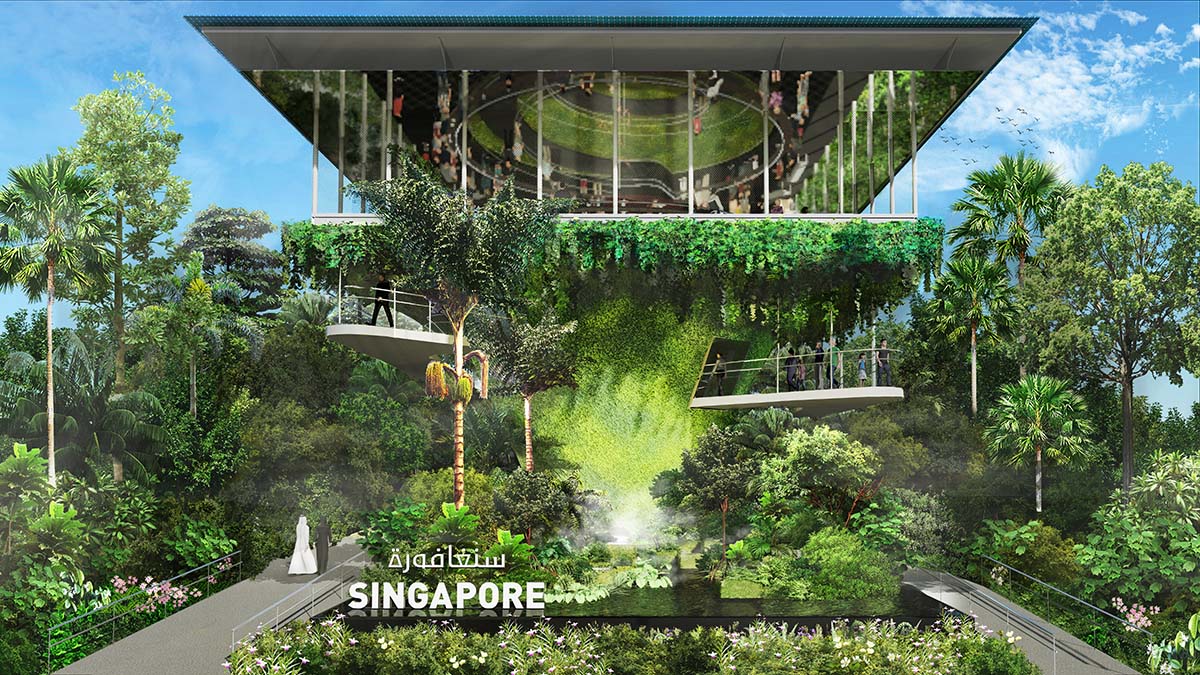
Design and details have been revealed for WOHA-designed Singapore Pavilion at the upcoming World Expo, which is planned to be held in Dubai, United Arab Emirates from 1 October 2021 to 31 March 2022.
Designed by Singapore-based architecture office WOHA, the Singapore Pavilion, situated within the Sustainability District, will underscore Singapore's vision on how the country shapes itself into a sustainable, liveable and resilient place through innovative urban solutions and culture.
At the Dubai Expo, the Singapore Pavilion will create a microcosm of the nation’s transformed landscape and presents an immersive structure that embraces its own self-sufficient system and a large garden landscape that activates visitors around the pavilion. The regenerative design of the Singapore Pavilion is aimed to achieve net-zero energy over the six month period.
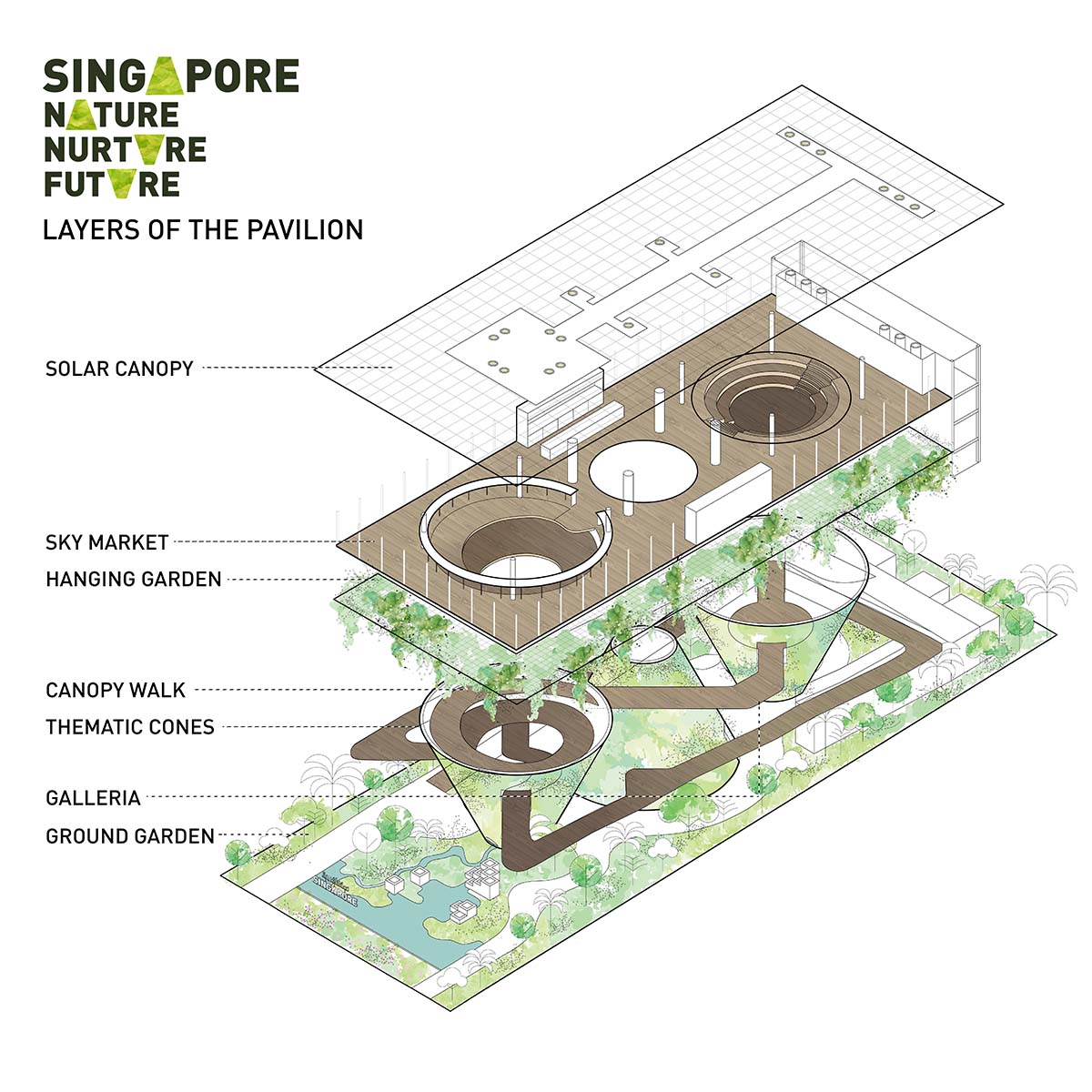
Conceived as a layered design, on the ground level there will be a huge garden, and gallery spaces above, canopy walks and thematic cones will create a dynamic atmosphere for visitors.
On the upper level, there will be a sky market and hanging garden, a solar canopy will cover the structure.
The Pavilion will profile Singapore’s experience and expertise in developing and implementing urban innovations and showcase the country’s continued commitment towards building a sustainable future. It also serves as a platform for the cross-pollination of ideas to build future cities that balances the needs of their people and environments.
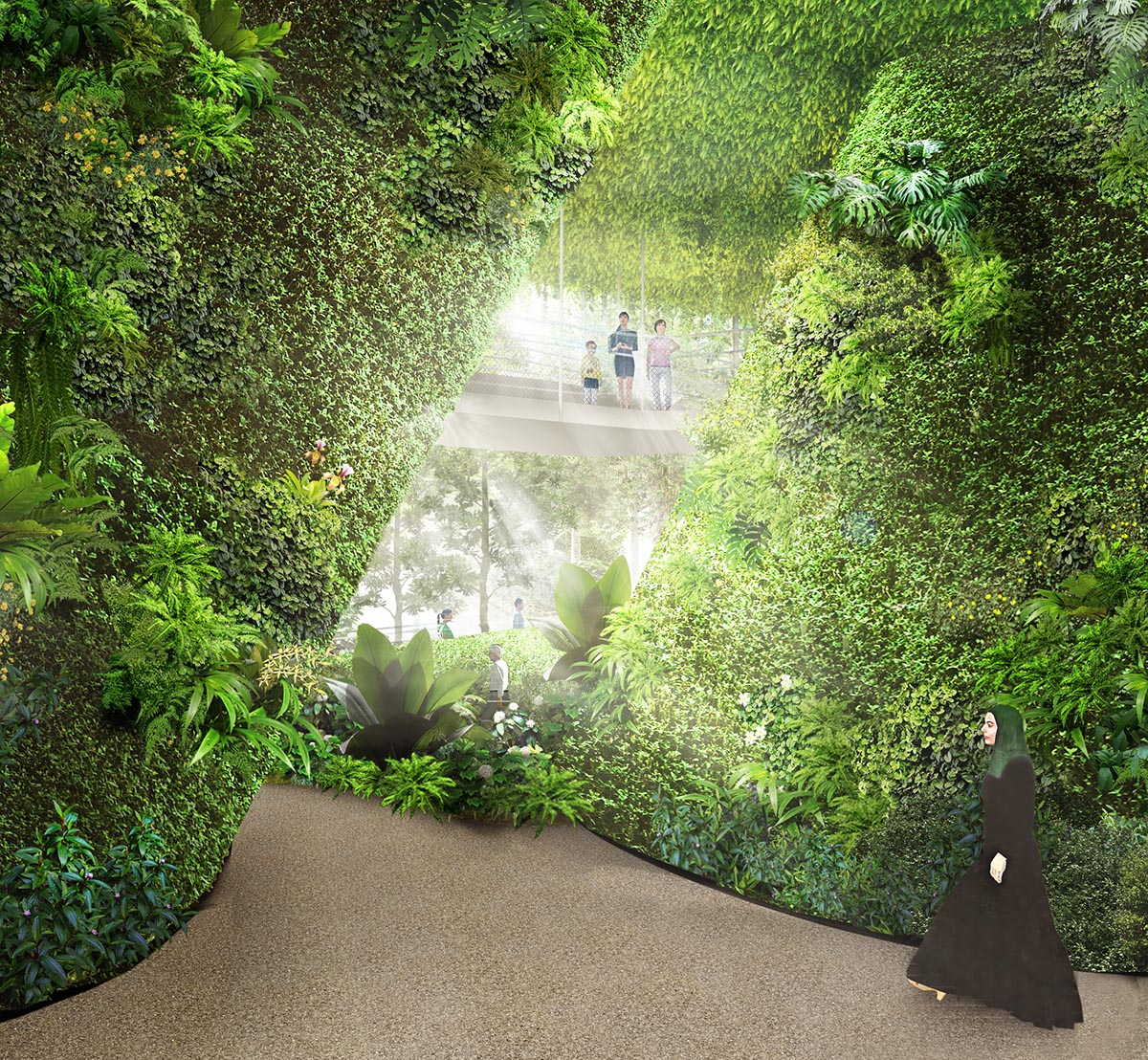
View from Cone Valleys
The Pavilion will offer a journey through Singapore’s sustainability story
As the organizers explain, "the Singapore Pavilion represents the nation’s efforts to be a City in Nature, and how this vision can also be realised anywhere through smart and sustainable urban solutions."
When visitors enter in the Ground Garden, visitors are welcomed by a garden landscape, with a phytoremediation1 pond nestled among a lush array of plants, trees, shrubs, including Singapore’s national flower, the Vanda Miss Joaquim orchid.
Boasting an open plan, the architecture interacts seamlessly with the environment, helping visitors to envision how nature can be integrated and restored in urban settings.
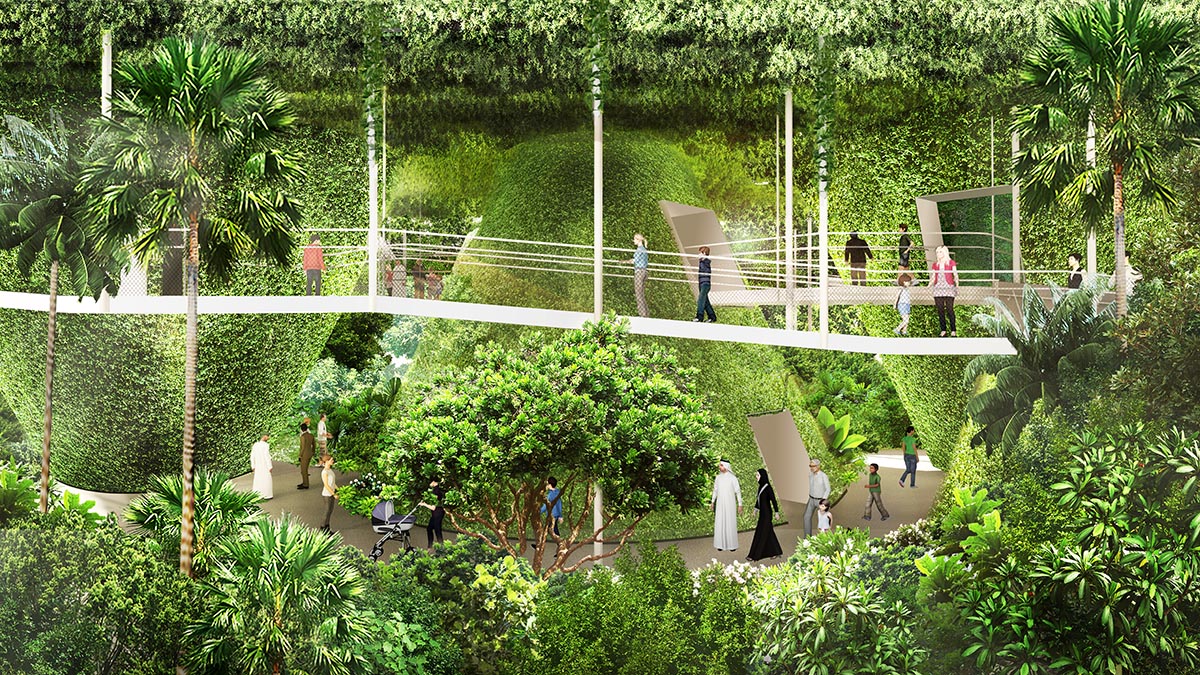
Canopy walk
As visitors make their way into the Singapore Pavilion, they will journey through three verdant thematic cones: Rainforest Cone, City Cone, and Flower Cone.
Each of them will house key exhibitions that showcase Singapore’s transformational journey, solutions to urban issues, as well as efforts in creating a sustainable future for our people.
The three cones are connected by a meandering, gently-sloping Canopy Walk capped with a hanging garden of draping vines, re-creating the atmosphere of the lush tropical urban landscape of Singapore.
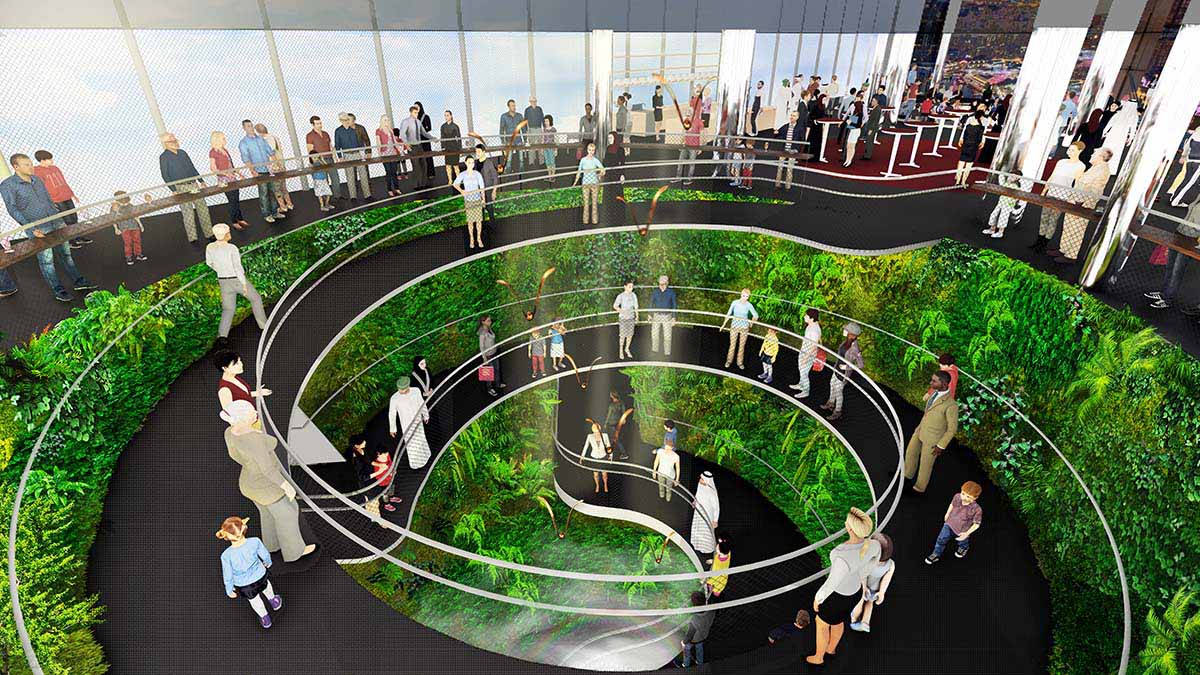
Rainforest cone
Incorporating regenerative design for long-term sustainability
The team states that the design of the spaces in the Pavilion doesn't only focus on sustainability issue. To reflect the country’s guiding ethos of sustainable development, the Pavilion which is built on a small 1,550-square-metre site, aiming to have minimal impact to the environment through its lifecycle.
The structure is designed to be a self-sufficient ecosystem, to achieve net-zero energy during the six-month event period via the use of solar panels, management of energy and desalination of saline groundwater.
The Pavilion showcases how the built environment can help to increase biodiversity, provide more space for trees and other greenery, and play a pivotal part in combating climate change, even in a desert environment. It also integrates landscaping into its design, showing that the built environment does not need to displace nature but can, in fact, co-exist with it.
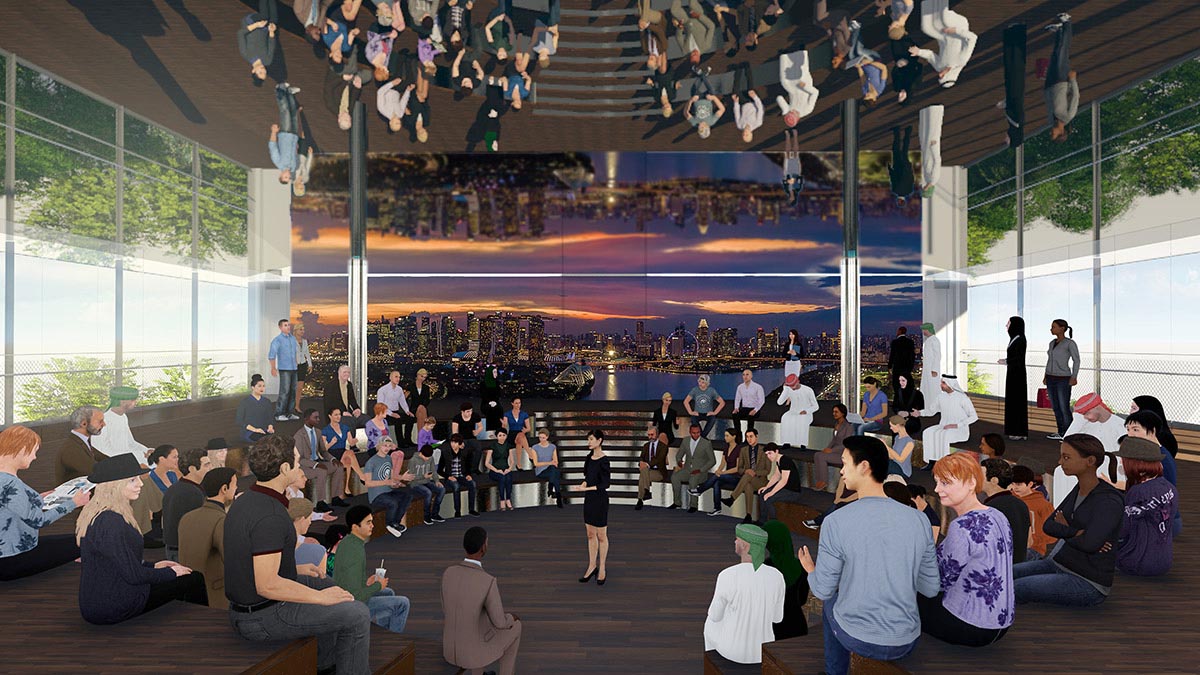
A view from Sky Market
The regenerative design approach aims to repair and restore the ecosystem and biodiversity, and to create an environment in which humans can live harmoniously with nature.
The architecture combines technological and natural systems, with nodes and layers forming symbiotic relationships between engineering, technology, plant life and organic processes.
Echoing Singapore’s vision of becoming a City in Nature, the Pavilion demonstrates the seamless integration and co-existence of nature and buildings and shows a captivating and forward-looking Singapore that is sociable, sustainable and liveable, via its delightful, relaxing spaces where visitors can unwind and connect with nature.
The Sky Market, designed as an open platform located on the top floor of the Pavilion, is a convivial area for visitors to learn more about the different facets of Singapore’s culture.
The Market space will house various programmes such as talks, workshops, and movie screenings for visitors to enjoy, and get a glimpse into Singapore’s social and cultural histories.
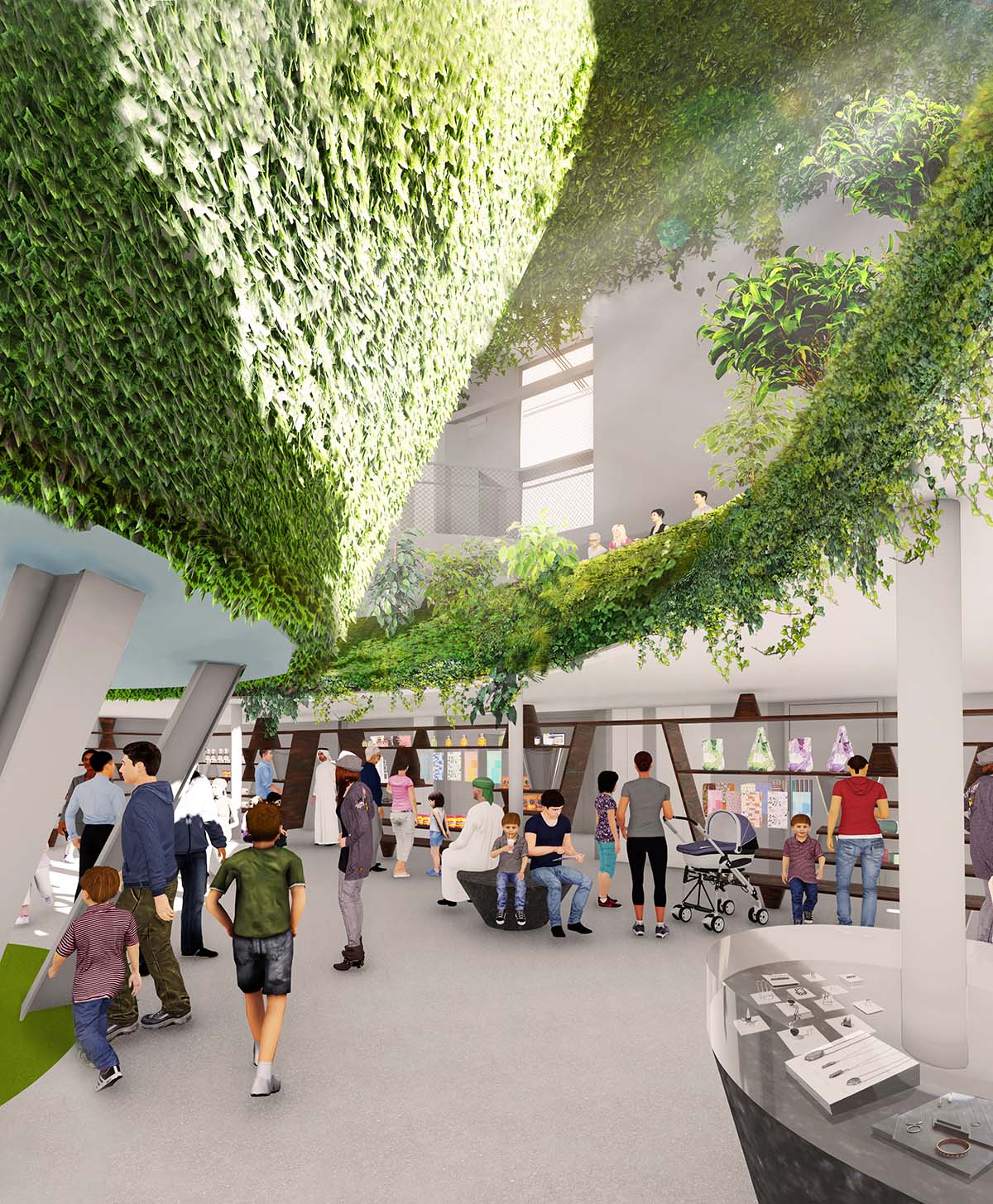
A view from Galleria
"The COVID-19 pandemic has shown how quickly it can change the way people live, work and play. In the face of critical challenges and disruptions facing the world today, it is important for nations to come together and find a way forward to build cities that sensitively adapt to tomorrow’s challenges," said Mr. Larry Ng, Commissioner-General of the Singapore Pavilion.
"The World Expo serves as an opportune platform for this collaboration, and the Singapore Pavilion is our contribution to this concerted international effort, serving as a viable and scalable proposition for shaping cities of the future."
"Being a country limited by land size and natural resources, it is crucial for Singapore to constantly innovate to stay ahead of the urban and environmental challenges of our time. The regenerative design framework of the Singapore Pavilion is an embodiment of how the nation has continued to overcome its physical limitations and be a liveable, sustainable and resilient city," added Ng.
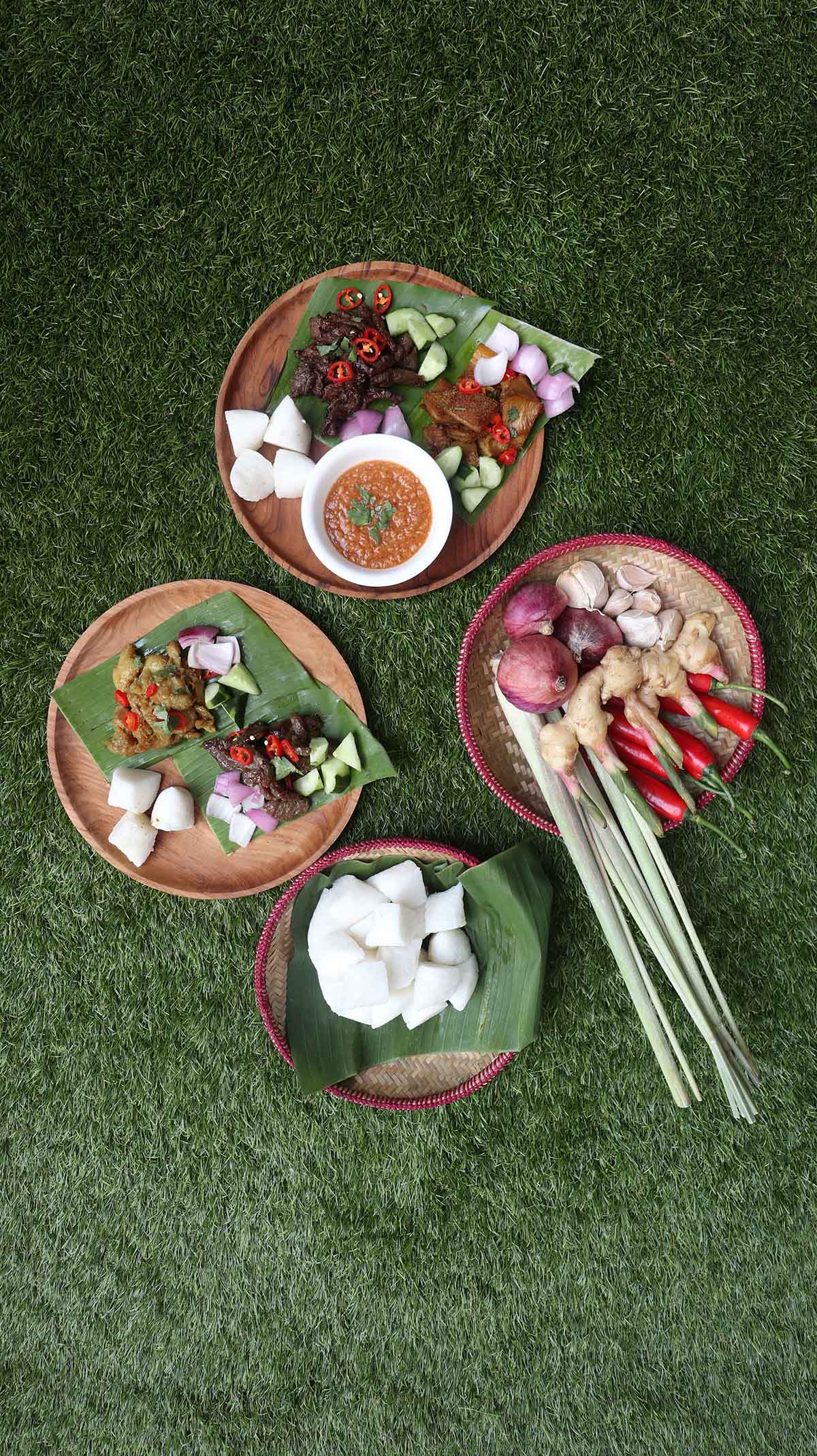
The Singapore Pavilion also celebrates the spirit of ingenuity, creativity and entrepreneurism embodied by Singaporeans. Local brands, ranging from heritage ones to up-and-coming labels, will tell their stories at the Singapore Pavilion, presenting the best of Singapore’s food and design culture on the global stage.
They will be featured at the Galleria, which displays the specially curated retail pieces inspired by the Pavilion so that visitors are able to bring home a piece of Singapore.
The Singapore Pavilion is currently in its final phase of construction and is scheduled to be completed ahead of the Expo 2020 Dubai opening.
When it opens, the Pavilion experience will also be presented on online platforms, given current travel restrictions and safe management measures, for more to take part in the programmes.
1The use of plants to reduce and remove contaminants from environmental sources such as soil, water and air.
All images courtesy of © Singapore Pavilion, Expo 2020 Dubai.
> via Singapore Pavilion
